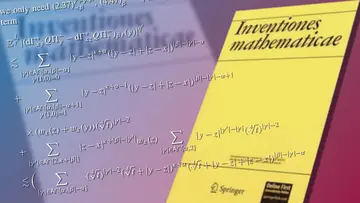
New Proof to Solve a Class of Stochastic Partial Differential Equations
Published July 10, 2024
A recent paper by Felix Otto, Markus Tempelmayr, Pablo Linares, and Pavlos Tsatsoulis presents a new approach to solve a class of stochastic partial differential equations. The results are published in Inventiones mathematicae.
Many models in continuum physics that involve thermal fluctuations come in form of partial differential equations driven by noise. Typically, the roughness of the noise is such that the constitutive nonlinearities in the model have to be given a sense by a renormalization. In their recent paper, our director Felix Otto, together with Markus Tempelmayr, Pablo Linares, and Pavlos Tsatsoulis, explore a version of Fields Medalist Martin Hairer’s theory of regularity structure which is considered a significant breakthrough in this field of singular stochastic partial differential equations. They found a method which helps to solve a certain class of such equations. The results have been published in the July issue of Inventiones mathematicae.
“Up to then,” Markus Tempelmayr explains, “it was something of a mystery how to solve these equations. The new theory has provided a complete ‘toolbox’, so to speak, on how such equations can be tackled.” In contrast to Hairer’s theory which uses methods that result in illustrative tree diagrams, the scientist’s approach is more analytic and top-down rather than combinatorial and bottom-up. What interests them in particular is the question of how the solution of the equation changes if the underlying stochastic process is changed slightly. Their method is based on a greedier index set than trees constructing and stochastically estimating the renormalized model proposed in a previous paper, avoiding Feynman diagrams but still using a fully automated, inductive method.
The authors, all scientists at the Max Planck Institute for Mathematics in the Sciences when this work was conceived, have succeeded in establishing and validating a simpler method to solve this class of equations with random components. Their approach is an excellent alternative that allows adaption to various problems and situations. This knowledge is also valuable for research groups employing different methods.
Original publication
P. Linares, F. Otto, M. Tempelmayr, P. Tsatsoulis (2024): A diagram-free approach to the stochastic estimates in regularity structures. Inventiones mathematicae. 2024, DOI: doi.org/10.1007/s00222-024-01275-z
Scientific Contact
Discover more
-
link.springer.com
Original publication in Inventiones mathematicae
-
www.uni-muenster.de
Press release by the University of Münster
-
www.mis.mpg.de
Information on the research group “Pattern Formation, Energy Landscapes, and Scaling Laws”

